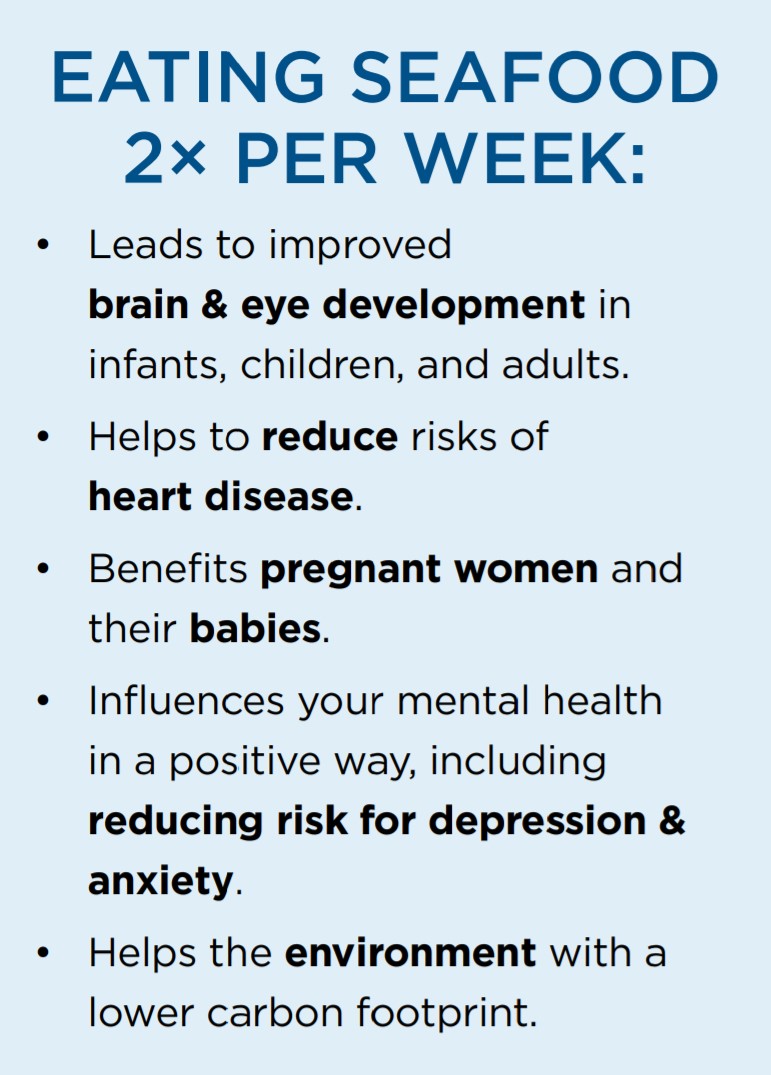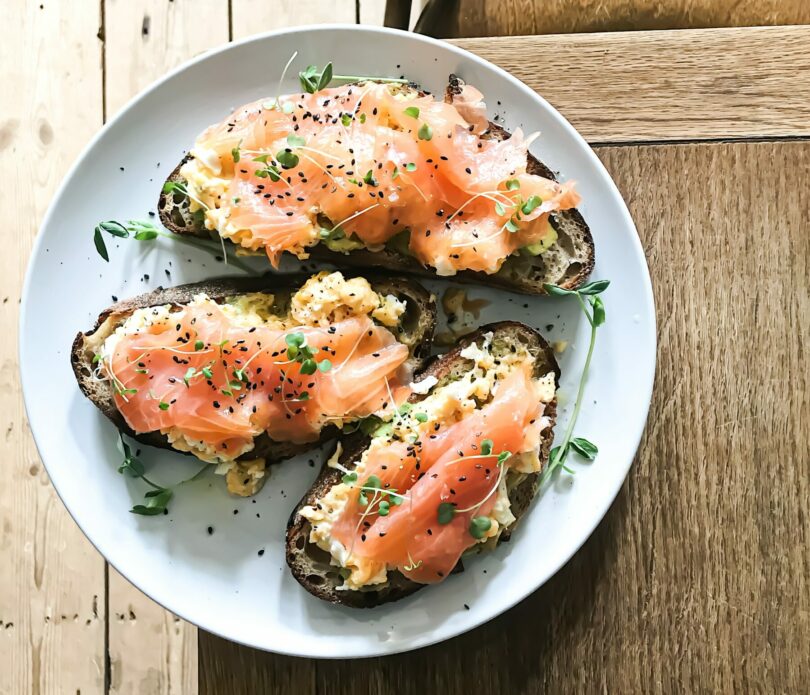 Make seafood – fish and shellfish- the main protein food on your plate at least twice a week. Seafood is not only an excellent source of lean protein, it contains a range of nutrients including vitamins A, B, and D, as well as healthy omega-3 fats. Fish is also rich in calcium and phosphorus and a great source of minerals such as iron, zinc, and magnesium. Seafood is the whole package your body needs for optimal wellness.
Make seafood – fish and shellfish- the main protein food on your plate at least twice a week. Seafood is not only an excellent source of lean protein, it contains a range of nutrients including vitamins A, B, and D, as well as healthy omega-3 fats. Fish is also rich in calcium and phosphorus and a great source of minerals such as iron, zinc, and magnesium. Seafood is the whole package your body needs for optimal wellness.
According to the Dietary Guidelines for Americans, eating at least two servings per week of a variety of seafood can help prevent heart disease. Not only that, new research recommends eating seafood regularly to contribute to improving your mental health and preventing and managing diabetes while keeping your brain and eyes in good condition throughout your lifespan.
Here are 10 Tips to Get Seafood on Your Plate
1. Eat a variety of Seafood
-
- With more than 500 species commonly available, it’s easy to find one that tickles your taste buds. Fish higher in heart-healthy omega-3s include tuna, salmon, trout, and sardines. Shellfish counts, too! Oysters, mussels, crab, and calamari (squid) all supply healthy omega-3s.
2. Keep seafood on hand
-
- Canned seafood, such as canned salmon, tuna, or sardines, makes for a delicious, easy, and healthy meal with minimal food prep. Also, keep frozen fish in the freezer as a cost-effective option – you can cook from frozen or thaw fillets in about 15-20 minutes. From frozen-at-sea fillets to baked fish sticks, grilled salmon to shrimp scampi, frozen seafood offers varieties everyone in your family will love. Plus, this means you’ll all stay healthy because of the omega-3s in seafood!
3. Shop sustainably
-
- To have a sustainable supply of seafood in the future, seafood needs to be caught or farmed with socially and environmentally responsible methods. The U.S. is a global leader in sustainability standards, so feel confident in buying fish caught or raised here. Look for certifier logos like Aquaculture Stewardship Council, Best Aquaculture Practices, and Marine Stewardship Council, find a reputable retailer and ask questions at the fresh counter.
4. Get budget-friendly options
-
- Delicious seafood comes at all price points. Eating more seafood doesn’t have to be expensive. Some quick tips to find a great deal: Check seasonality – for example, fresh Alaskan salmon is cheaper in early summer when the fish are running. (Farmed seafood is available year-round.) Many sustainable species with large, healthy fisheries can be found at great deals – look for flounder, perch, tuna, and Pacific or Alaskan cod, pollock, and rockfish, for example. Buy in bulk and freeze. Check the weekly sales and clip coupons to save.
5. Cook it safely
-
- When seafood is properly handled and cooked to temperature it is safe and delicious. Keep seafood refrigerated until ready to use and then cook fish to an internal temp of 145°F, until it easily flakes with a fork. Cook shrimp, lobster, and scallops until they are opaque (milky white).
6. Get creative
-
- Think beyond the fish fillet. Try salmon patties, shrimp stirfry, fish tacos, or clams with whole-wheat pasta. Eat the foods you already enjoy and jazz it up with fish or shellfish! Each of these contain omega-3s for your health.
7. Use it as a topping
-
- Top a salad or grain bowl with canned tuna or salmon or use it for sandwiches in place of deli meats. You can also cook extra of your favorite fish and use the leftovers for another meal or two – a great way to get your seafood twice a week (and your omega-3s)!
8. Get those Omega-3s
-
- Omega-3 fats from seafood can help improve nervous system development in children, impacting brain function and eyesight. Serve seafood to children twice a week in portions appropriate for their age and appetite. And make sure to get an early jumpstart – a variety of seafood should also be part of a healthy diet for women who are pregnant or breastfeeding. You can include omega-3 fish oil supplements as needed.
9. Know your portions
-
- To get 8 ounces of seafood a week, use these as guides: A drained can of tuna is about 3 to 4 ounces and a typical salmon fillet ranges from 4 to 7 ounces.
10. Go beyond fish & shellfish
-
- If you’re a vegan or vegetarian, you can also enjoy the health benefits of seafood – try sea vegetables like seaweed and algae. You can mix it in soups, stews, and salads for a salty, umami flavor, stir it into salad dressings, or eat seaweed dried as a snack.



Leave a Reply